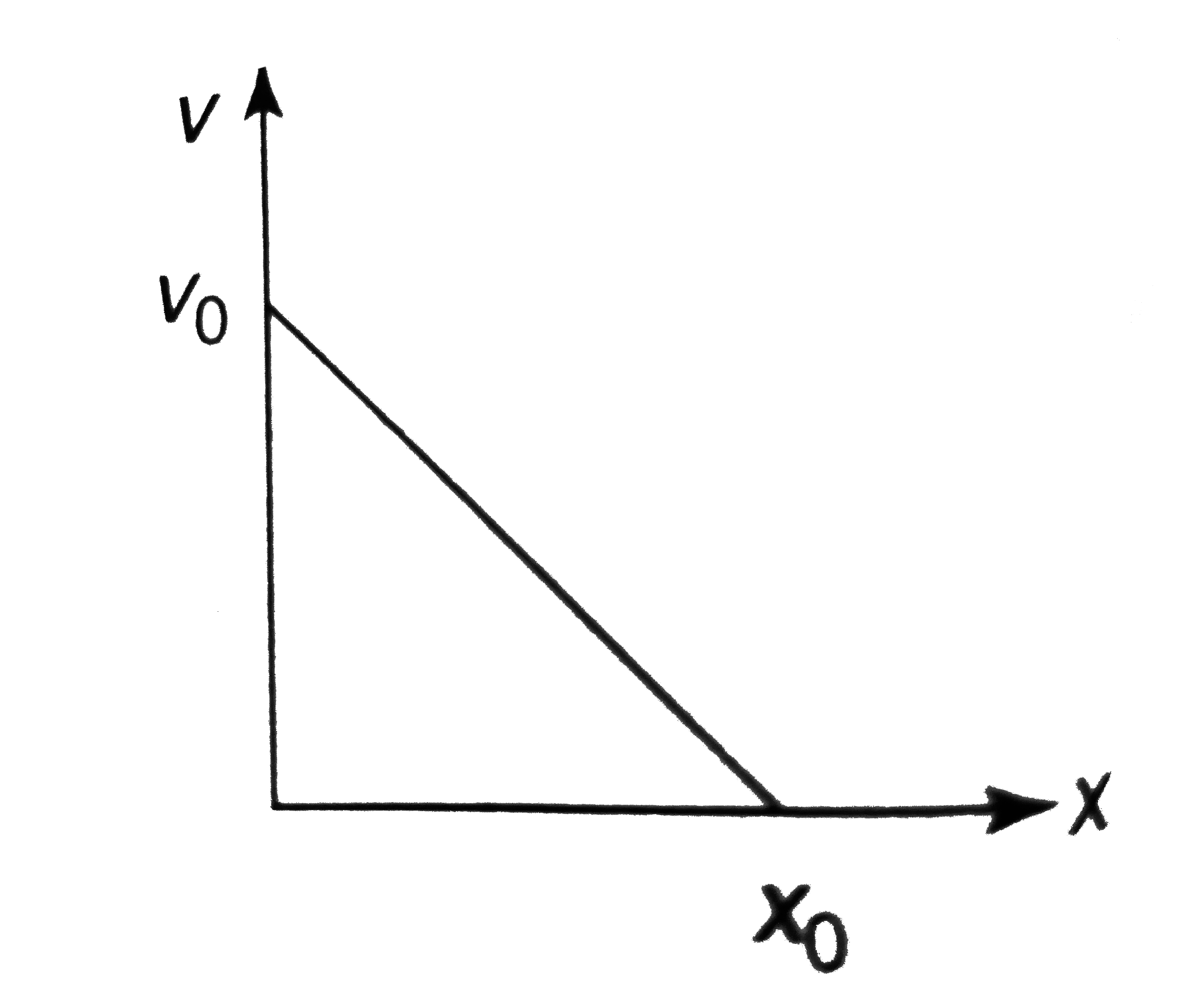The graph show the behaviour of a length of wire in the region for which the substances obeys Hooke's law. and represent

P=applied force, Q=extension
P=extension, Q=applied force
P=extension, Q=stored elastic energy
P=stored elastic energy, Q=extension
The correct Answer is:C
(c) Graph between applied force and extension will be straight line because in elastic range,
Applied force extension
but the graph given in parabolic in nature
So, it will be between extension and stored elastic energy As or
Topper's Solved these Questions
- ELASTICITYBOOK - DC PANDEYCHAPTER - ELASTICITYEXERCISE - Match the columns
4 Videos
- ELASTICITYBOOK - DC PANDEYCHAPTER - ELASTICITYEXERCISE - Medical entrances s gallery
21 Videos
- ELASTICITYBOOK - DC PANDEYCHAPTER - ELASTICITYEXERCISE - Check point 12.3
15 Videos
- CURRENT ELECTRICITYBOOK - DC PANDEYCHAPTER - CURRENT ELECTRICITYEXERCISE - All Questions
434 Videos
- ELECTROSTATICSBOOK - DC PANDEYCHAPTER - ELECTROSTATICSEXERCISE - Integer
17 Videos
Similar Questions
Draw the variation of potential energy and kinetic energy of a block attached to a spring, which obeys Hooke's law.
View SolutionThe graph in Fig. 11.8 shows the variation of elongation with tensile force for two wires P and Q.

If P and Q are of the same material and have the same length, which one has a greater area of cross section ?
View Solution
Knowledge Check
The graph shows the behaviout of a length of wire in the region for which the substance obeys Hook's law. D and Q represent
 AP = applied force, Q = extensionBP = extension, Q = applied forceCP = extension, Q= stored elastic energyDP = stored elastic energy, Q = extension
AP = applied force, Q = extensionBP = extension, Q = applied forceCP = extension, Q= stored elastic energyDP = stored elastic energy, Q = extensionThe graph shows the behaviour of a steel wire in the region for whoch the wire obeys Hooke's law. The graph is a parabola. The variables X and Y -axes, respectively can be [ stress (σ),strain (ε) and elastic potential energy(U) ]
 AA) U,σBB) U,εCC) σ,εDD) None of these
AA) U,σBB) U,εCC) σ,εDD) None of these
The stress strain graph for a metal wire is as shown in the figure. In the graph, the region in which Hooke's law is obeyed, the ultimate strength and fracture are represented byAOA,C,DBOB,D,ECOA,D,EDOB,C,D
One metre long metallic wire is broken into two unequal parts P and Q. The part P is uniformly extended into another wire R. Find the ratio of the resistances of P and R and also the ratio of the lengths P and Q.
View SolutionThe given graph shows the variation of velocity with displacement. Which one of the graphs given below correctly represents the variation of acceleration with displacement ?

View SolutionWhich of the following graphs represent the behaviour of an ideal gas ?
View SolutionTwo important physical evidence support the synergic bonding in non-classical complexes-bond lengths and vibrational spectra. Vibrational spectra is based on the fact that the compression and extension of a bond may be analogous to the behaviour of spring and obeys Hooke's law.
−v=12πc√Kμcm−1 Where, K=force constant of the bond which is directly proportional to bond strngth
μ=reduced mass of ligand
−v=stretching frequency of the CO bond
C=velocity of light
In compound [M(CO)N]z the correct match for highest M-C bond length for given M, N and Z respectively
View SolutionTwo important physical evidence support the synergic bonding in non-classical complexes-bond lengths and vibrational spectra. Vibrational spectra is based on the fact that the compression and extension of a bond may be analogous to the behaviour of spring and obeys Hooke's law.
−v=12πc√Kμcm−1 Where, K=force constant of the bond which is directly proportional to bond strngth
μ=reduced mass of ligand
−v=stretching frequency of the CO bond
C=velocity of light
In compound [M(CO)N]z the correct match for highest M-C bond length for given M, N and Z respectively
View Solution
